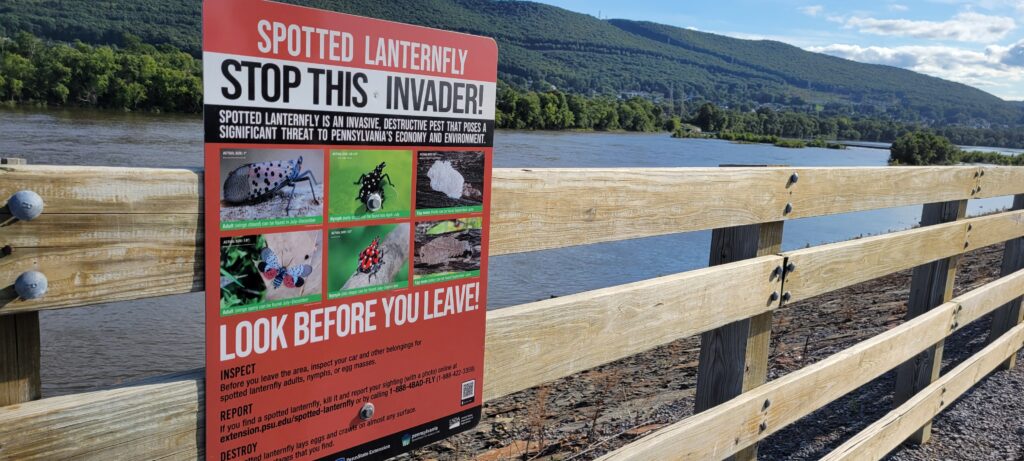
If you have walked on the Susquehanna River Walk recently you may have noticed signs warning of an invasive Lantern Fly spreading across Pennsylvania.
The fly is a native to parts of Asia but was first discovered in Berks County Pennsylvania in 2014. While the fly seems to have stayed in the northeastern portions of the state, in 2022 Lycoming County joined 10 other counties to be added to the quarantine list for the invasive fly.
Snyder, Union and Center counties also were among the list of new quarantined regions.
Individuals who see the Lantern Fly should kill as many as possible, according to the state Department of Agriculture. In addition, take a photo and send it to the Department of Agriculture along with the location where it was discovered.
The Lantern Fly is not harmful to humans, but poses a serious risk to some of Pennsylvania’s largest natural exports.
The fly travels in swarms and feeds on sap from tree trunks, stems or leaves and it feeds in swarms. It then excretes a honeydew which forms sooty mold, which is a fungal disease that turns the plants sticky and black.
Grape, peach, apple, walnut, maple and sycamore plants are a small sampling of the roughly 70 plants the Lantern Fly will eat.
Pennsylvania is the world’s largest producer of hardwoods, producing roughly $19 billion annually. In addition, the state is the fourth largest producer of apples, third largest producer of juice grapes, and fifth largest producer of wine grapes. Over $100 million in plant products are at risk in the state.
According to the state Department of Agriculture, quarantining various regions in the state is meant to slow the spread of the fly and give the state an opportunity to advance in science and technology to combat its effects.
Find more information about the Lantern Fly here.




